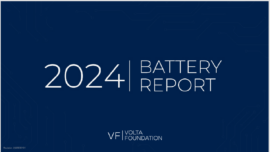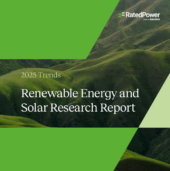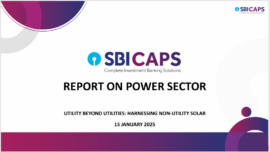IRENA World Energy Transition Outlook identified that there is a geographic concentration of investments, and calls for structural changes to close the financing gap faced by the countries of the global south. According to the report’s findings, among the advanced economies of 38 countries, which make up 14% of the world’s population and represent 40% of global GDP, USD 800 billion was invested in energy transition, accounting for 47% of the global total investment, as per the report’s findings. The report sheds light on the theme that, “Climate philanthropy is not only limited in scope but also in terms of geography.”
The IRENA’s latest report stated that the global energy transition can only be achieved through a massive scaling up of financing across multiple countries and regions. Global investments in renewable capacity additions reached USD 570 billion in 2023, compared to USD 448 billion in 2022, representing a 27% increase. Most of the investments were concentrated in China, the United States, Brazil, India, and Germany.
Indeed, in terms of investment as per IRENA’s latest report, energy transition as a whole, half of the world’s population – comprising more than 150 economies – received only 10% of investments in 2023. African countries, despite their severe needs and high resource potential, have failed to attract significant financial flows, as investments in least-developed countries are often seen as high-risk.
Countries such as the United States and the European Union (EU) have led these investments, recently bolstered by the expansionary fiscal stimulus for clean energy sectors initiated by the US Inflation Reduction Act and the EU’s Green Deal. These policies are anticipated to continue driving energy transition investments in the years ahead. Emerging markets and developing economies (EMDEs, or the Global South) received 53% (just under USD 900 billion) of global investments, with the majority directed toward China, India, and Brazil.
These three countries represent 38% of the world’s population and 27% of its GDP, collectively accounting for nearly 43% of global investment. In contrast, half of the world’s population – comprising more than 150 economies outside China, India, and Brazil and representing one-third of global GDP – received only 10% of the energy transition investments.
This small share of funding is primarily concentrated in key EMDE markets, including Vietnam, Poland, Mexico, Chile, Indonesia, the United Arab Emirates, Thailand, the Philippines, the Russian Federation, Malaysia, Hungary, and Peru. The remaining 140 EMDEs received less than 7% of global investments.
In 2022, 30% of overall foundation funding for climate change mitigation was allocated to initiatives spanning multiple regions. Meanwhile, more than 60% of funding directed to a single country or region was concentrated in the United States, Canada, and Europe alone.
Renewables investment and deployment remain concentrated in relatively few countries. Therefore, more attention is needed to ensure the energy transition is truly global. This will require more international collaboration to channel funding for the transition in the Global South, highlighting the importance of efforts to establish the New Collective Quantified Goal (NCQG) for climate finance at COP29.
Thus, energy transition investments must increase dramatically to meet the renewable energy and efficiency goals outlined in the First Global Stocktake at COP28. Annual investments in renewable power, grids and flexibility, energy efficiency, and conservation must increase from USD 1.29 trillion in 2023 to USD 4.5 trillion each year between 2024 and 2030 to meet the UAE Consensus renewable energy and energy efficiency goals.
















